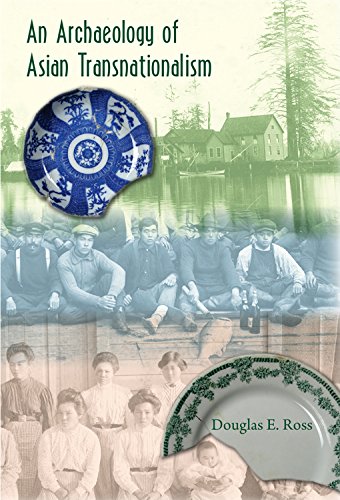By Grant Keddie
Book Review of: An Archaeology of Asian Transnationalism. By Douglas E. Ross. Gainesville, FL, University Press of Florida, 2913. 245 pp. $103.95 cloth. In: B.C. Studies, Winter 2015/16, pp. 123-124.
Although descriptive work on historic artefacts of Asian origin has been sporadically produced by American archaeologists since the 1960s, and by BC archaeologists since the 1970s, recent years have seen Asian archaeology in North America blossoming into a more humanities informed scholarship. By subjecting archaeological finds to historical (written and oral) documentation and to the analytical writing on diaspora and Transnationalism, Douglas Ross, in An Archaeology of Asian Transnationalism, develops a useful model for understanding historical Asian archaeology in late nineteenth and early twentieth-century British Columbia. Ross’s book, along with Michael Kennedy’s “Fraser River Placer Mining Landscapes” (BC Studies 2009) and a recent Historical Archaeology (2015) special issue on Chinese railway workers in North America (edited by Barbara Voss), shows an increasing interest in this subject.
Ross argues that the excavation of Asian manufactured artefacts in British Columbia has often been undertaken by contract archaeologists unfamiliar with current analytical writing on Asian archaeology from other places – a literature that, he argues, can have a bearing on specific local contexts and material culture. Ross argues that archaeologists lacking the appropriate conceptual/analytical background should focus on describing the detailed site context of their finds and leave the theorizing to those with specialized academic knowledge. His principal analytical frameworks are derived from concepts of transnationalism and diaspora – the dispersal of people from their homeland. He examines transformations arising from the displacement associated with the migration of Asians to British Columbia and with how immigrants from common homelands created and maintained communities and collective identities. He sees diaspora as a process of dispersion and identity formation, and he emphasizes the social processes through which diasporic groups were created. Although he recognizes that ethnic bonds formed the basis for diasporic social organization, he views diaspora as a process rather than as the continuation of a fixed identity.
Specifically, Ross focuses on the material remains of Japanese and Chinese settlers at industrial work camps on two small islands associated with commercial fishing – Don Island and Lion Island – on the lower Fraser River. In assessing the role of ethnic identity in influencing material culture, Ross recognizes the role of multiple and interacting factors. I have observed from my own research that the same material goods in different places might tell quite different stories. The presence of Asian goods in archaeology sites may have less to do with ethnic identity than with the profit-oriented ambitions of Chinese merchants exploiting a market demand for Asian products. In Victoria, for example, Chinese and (later) Japanese goods were available and inexpensive for any potential purchaser – Asian or non-Asian – owing to the city’s position as colonial port of entry, major north Pacific port, and site (until 1890) of British Columbia’s largest Chinatown. Asian goods were therefore cheaper in Victoria than in other parts of British Columbia. Chinese wine bottles reused by non-Chinese settlers for water storage will, of course, mislead an uninformed archaeologist. Therefore, a knowledge of local costs, context, and usage is important with regard to how we interpret the presence of Chinese artefacts. Although in my opinion we still need good quality descriptive studies, I agree with Ross that analytically informed archaeology is vitally important, in combination with other historic documentation, in assessing the experiences and consumer habits of migrant communities as they navigated diasporic identities and transnational relations.
